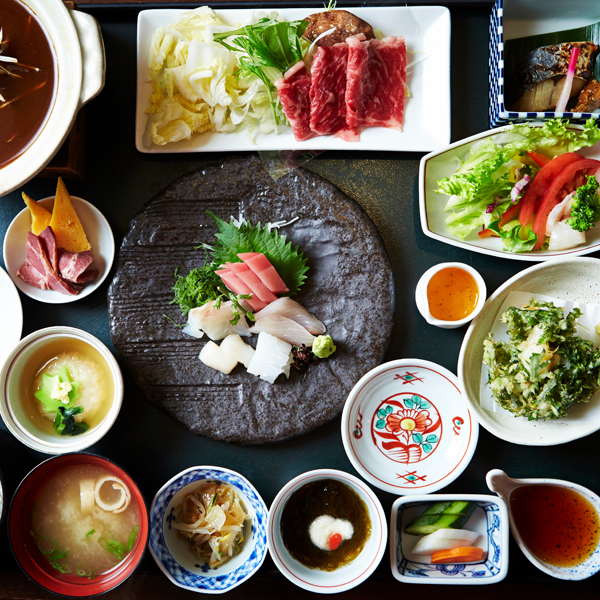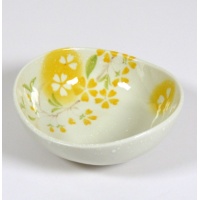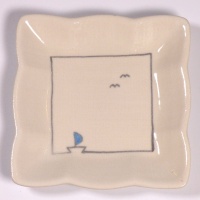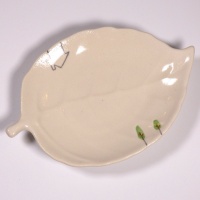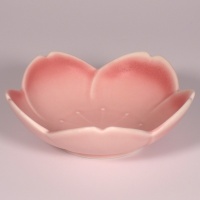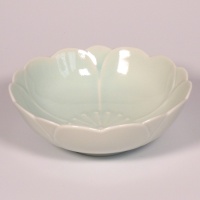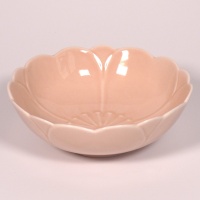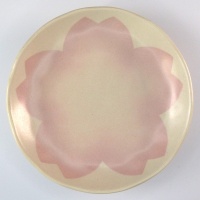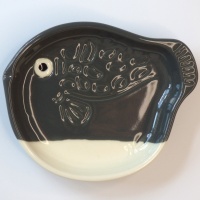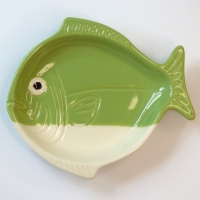Japanese cuisine includes many delicious side dishes, condiments and dips that are served as part of the main meal.
They’re often not easy to find in UK supermarkets, especially if you don’t live in a big city, but some are quite easy to make yourself with just a few ingredients. They really add that extra authenticity to your meal and bring out the delicious umami flavour of your Japanese cooking!
In this blog I’ll be talking about the types of accompaniments you might want to serve along side your meal, rather than cooking sauces or spices that are added to the recipe or even the array of rich brown specialist sauces that go with a particular dish such as okonomiyaki sauce, tonkatsu sauce, yakiniku and unagi sauces.
Dipping sauces

Requiring good chopstick skills, generally each person is given their own serving of dipping sauce to go with the main dishes.
There is also likely to be a number of different dips that go with the different foods and using a large plate, table mat or tray keeps all the dishes together and helps avoid spills on to the table.
Here are some of the most popular dipping sauces you might serve or be served with your meal.
Soy sauce (shoyu)
Soy sauce, also known as 'shoyu' is probably the most famous of all Japanese sauces and is commonly used both in Japanese cooking and as an accompanying dip. It’s served alongside all kinds of foods including sushi, meat dishes, fish and vegetables and you might have other condiments on the side to mix with it such as ginger, wasabi or grated daikon radish.
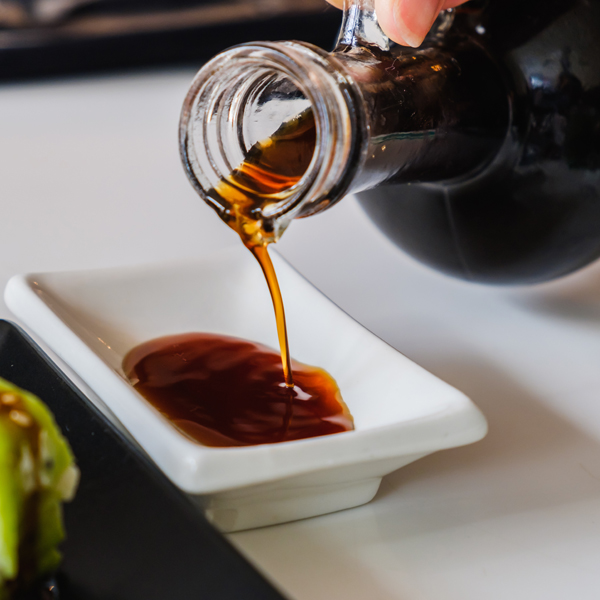
Soy sauce also forms the base of other dipping sauces such as ponzu sauce, teriyaki sauce and salad dressings. At the table, diners usually serve themselves from a shared dispenser into a small shallow bowl or mini plate.
Did you know that when eating nigiri sushi you should turn it over and dip just the fish topping side into the soy sauce? This stops the rice absorbing too much shoyu and falling apart.
Ponzu sauce
Ponzu is a Japanese citrus sauce made from the juice of the yuzu, sudachi or kabosu citrus fruits blended with rice vinegar, mirin and sake. It is a clear pale yellow colour and, as you can imagine, it has a refreshing, sharp flavour.
Ponzu can be served on its own but often it is mixed with soy sauce to make a flavoursome dip with the umami of soy sauce but with a lighter, citrus-y flavour that’s popular in summer.
Because of its light flavour, you will often find it served with hot pot dishes like shabu-shabu or sukiyaki as a dip for the meat, and it also goes great with noodles, fried foods and salads.
Mayonnaise
Mayonnaise might not sound very Japanese but you’ll find it served with a surprising number of dishes. It features in Japanese potato salad and is liberally dispensed from a squeeze bottle over okonomiyaki, takoyaki and pizza. It also makes a good dip for tempura and kara-age.
Japanese mayo has a rich, creamy flavour and the most popular make is unsurprisingly Japan's own Kewpie brand. It is sometimes mixed with more typical Japanese ingredients such as dashi, miso or rice vinegar to add umami flavour or to create a lighter dressing.
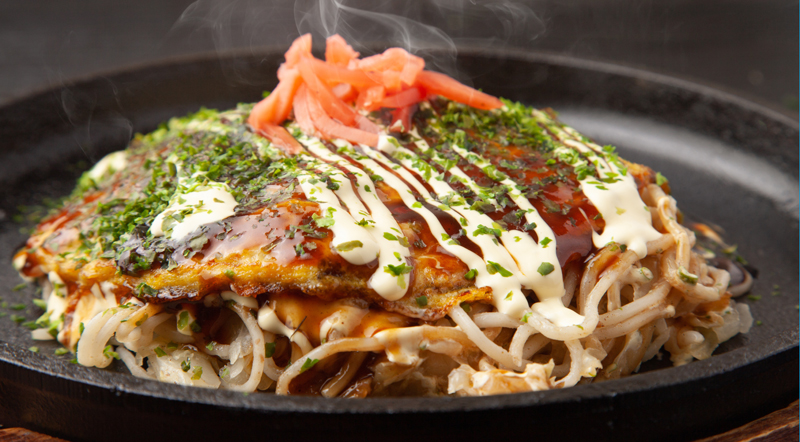
Yellow mustard (karashi)

Japanese 'karashi' mustard looks very much like American yellow mustard but it’s much hotter, being more like traditional English mustard.
As well as being used as an ingredient in some Japanese recipes it is served as a condiment on the side with meat dishes such as tonkatsu, steak or sausages and it also goes great with natto and shumai dumplings.
Pastes and pickles
Pastes and pickles
In Japanese cuisine it’s common to find vegetables, especially root vegetables, ground or grated into a paste and served alongside the main dishes. Some have become familiar to western palates and others are more unusual or even unique to Japan.

Japanese people are also very fond of pickled vegetables which add a refreshing crunch to your meal and balance heavier, richer flavours. Known as 'tsukemono', these pickles are often very easy to make at home requiring just salt and vinegar to marinade your chopped veg.
Wasabi
Proper fresh wasabi comes from the Japanese plant which is similar to horseradish. It’s comparatively difficult to grow because it likes fresh running water and shade, preferring a natural environment to commercial cultivation.
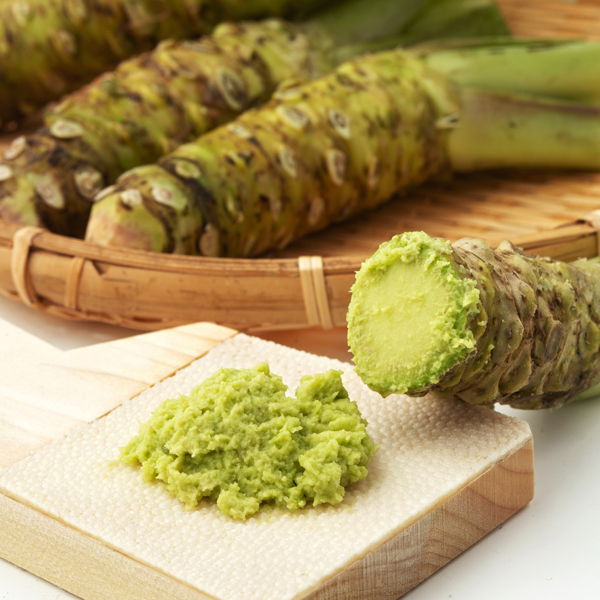
But still, you can find it and the refined flavour is noticeable if you’re used to the regular packet version, which is really coloured horseradish paste.
With fresh wasabi, the plant’s knobbly root is ground in a circular motion on a specialised oroshi grater to form a paste.
Famously wasabi is served as a condiment with sushi and sashimi but is also served with raw meat and other fish. You can put it directly on your food using your chopsticks or mix a little into your soy sauce to make a delicious dip.
Ginger
Ginger is of course widely used in cooking to add flavour and heat but if you have eaten Japanese food then you’ll almost certainly have been served ginger on the side as a condiment.
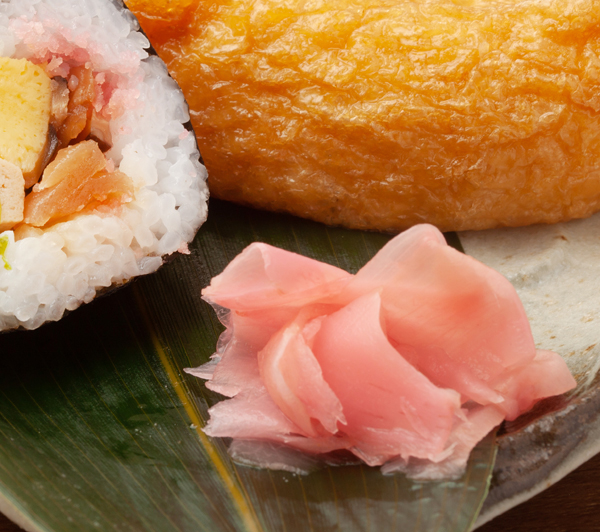
The most familiar for most people outside of Japan is probably ‘gari’, the sweet and aromatic pickled ginger served with sushi. The ginger root is thinly sliced and pickled in vinegar, salt and sugar. It’s usually a pale ivory colour or sometimes has a pinkish hue and makes a lovely refreshing palate cleanser in between bites of sushi.
‘Beni shoga’ is another type of pickled ginger. This time it’s sliced in to thin julienned strands and pickled in plum vinegar. The vinegar also contains red shiso leaf which gives it a beautiful red colour. Its crunchy texture, bright colour and sweet-sour flavour makes it a lovely garnish for all kinds of hot dishes such as yakisoba, ramen and okonomiyaki.
Fresh ginger root is also sometimes grated with an oroshi and served as a paste with soup, stir fry and other foods.
Daikon radish
Daikon is the long white radish that you can often see in Chinese and Asian supermarkets. It is a common ingredient in Japanese cooking but as well as a cooking ingredient, it’s also used to make some small side dishes.
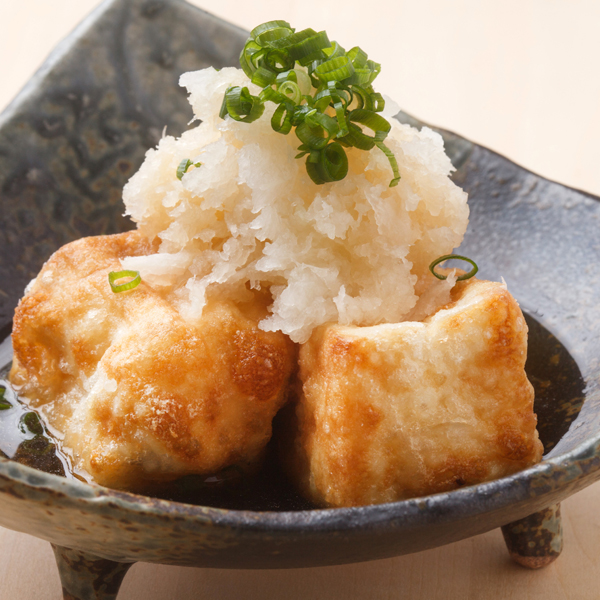
One accompaniment that may come with your meal is ‘daikon oroshi’ or grated daikon. It has a mild, spicy flavour that goes well with fish, meat and tempura. Usually, you would take the grated daikon and mix it with your soy sauce to make a tasty dip and it also tastes good added to hot pot and dishes with a lot of soup like udon and soba noodles.
A fine bladed oroshi grater is a good way to get the right consistency for the paste. But don’t leave it out too long or it will lose its flavour!

Takuan, or takuan-zuke, is pickled daikon radish. It has a bright yellow colour and a sweet, very slightly sour taste. You can often find this pickle alongside your bento lunch and in maki rolls. It’s one of my favourites!
It can really accompany anything from curry rice to soba noodles but it even tastes delicious just with plain Japanese rice.
Yuzu Kosho (Citrus Chili Paste)
Yuzu is a Japanese citrus fruit. To make yuzu kosho, the zest of the yuzu fruit is blended with red or green chilli and salt to make a pale green paste.
The paste can be used on its own with miso soup, ramen and other soup-based dishes or mixed with soy sauce or mayonnaise to make a dipping sauce for gyoza, yakitori and other meats, fish and vegetables.
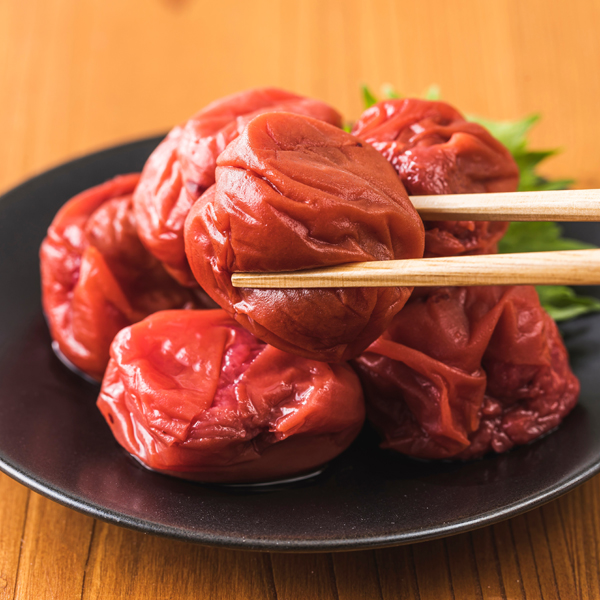
Umeboshi
Umeboshi is a red, shrivelled looking Japanese plum that has spent months packed in salt and left to ferment. It has a sharp, salty flavour and is generally served either whole or chopped into a paste with plain rice or as the filling in an ‘onigiri’ rice ball. Its refreshing sour taste is especially popular at the height of hot humid Japanese summers.
Other pickled vegetables
Pickles are an important accompaniment to many Japanese meals, be that a snack lunch or formal sit down meal. Apart from the ones already mentioned, you’ll often also find pickled cucumbers, aubergine and lotus root.
They often take on bright colours from the ingredients that are used in the pickling process such as red shisou and provide a colourful, crunchy contrast to a rich umami-packed meal.
Powders and sprinkles
We're used to seeing salt and pepper on the dining table but while eating your Japanese meal, you might be served some more unusual dry condiments that can be sprinkled over or added to your food for extra flavour.
Salt (shio)
Of course, we are familiar with sprinkling a little salt on our food (although these days we’re all advised to cut down!) and it’s no different in Japan.
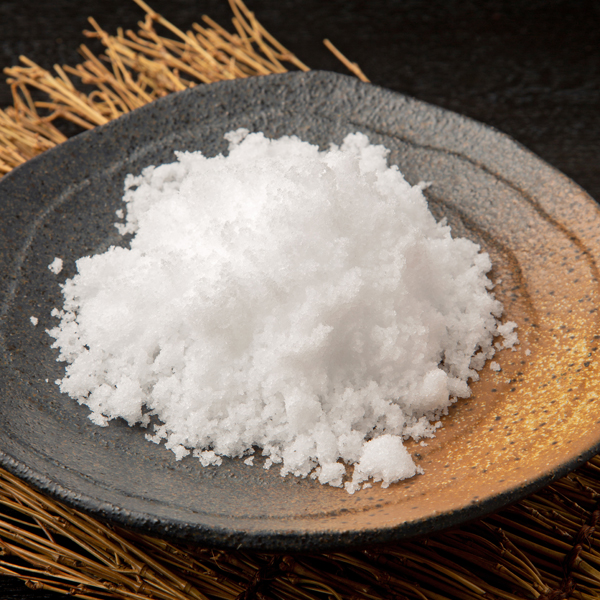
More interesting, however, are the flavoured sea salt variations that are served with some Japanese foods and, rather than being shaken from a salt cellar or grinder, they are usually served in a small bowl.
Matcha salt, for example, is sea salt that has been blended with matcha powder. The salt has a subtle matcha tea flavour and a pretty green colour. As well as being good with chicken and fish, you might also sprinkle it over salad or egg.
You can also find yuzu salt which is made with the zest of the yuzu fruit. Its refreshing citrus taste goes well with fried dishes such as tempura and kara-age chicken.
Pepper
Different types of ground pepper also feature in Japanese cuisine.
Sansho pepper is made from the ground peppercorns and leaves of the Japanese prickly ash tree. Its taste profile is quite different from the black or white pepper we might be used to as it has a noticeable citrus flavour and a slight numbing effect on your tongue. It is excellent to serve with grilled and fried meat such as yakitori and kara-age chicken because of its refreshing taste. Fatty fish such as eel also benefits from the slight kick and fresh taste.
Togarashi pepper is another way to add heat to a dish. Togarashi is the word for Japanese chilli pepper and two types are commonly served. Ichimi togarashi (‘ichi’ is Japanese for one) is ground chilli pepper with no other flavours and shichimi togarashi is a blend of seven spicy and aromatic dry ingredients: red chilli, dried citrus zest, aonori seaweed, black and white sesame, sansho and ginger although some recipes may substitute some of these ingredients.
Bonito flakes
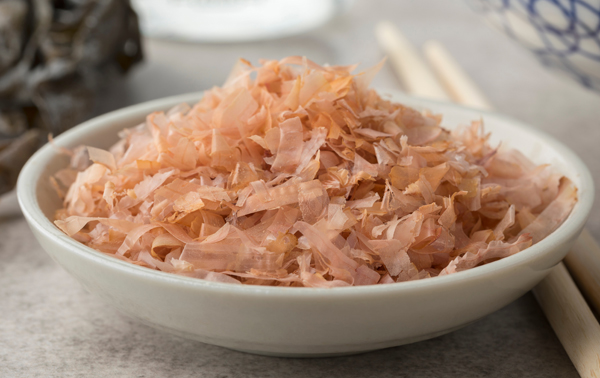
Bonito flakes or katsuobushi are dried fish flakes that have been finely shaved, almost like very thin wood shavings. They are the main ingredient of dashi fish stock but are also sprinkled liberally over okonomiyaki and takoyaki.
The tissue thin flakes curl and shrivel as they land on the piping hot food and are a really delicious topping.
Aonori
Aonori seaweed flakes have a beautiful dark green colour and are another delicious sprinkled topping. Loaded with umami and the aroma of the sea, it’s often added on top of okonomiyaki, takoyaki and yakisoba stirfry.
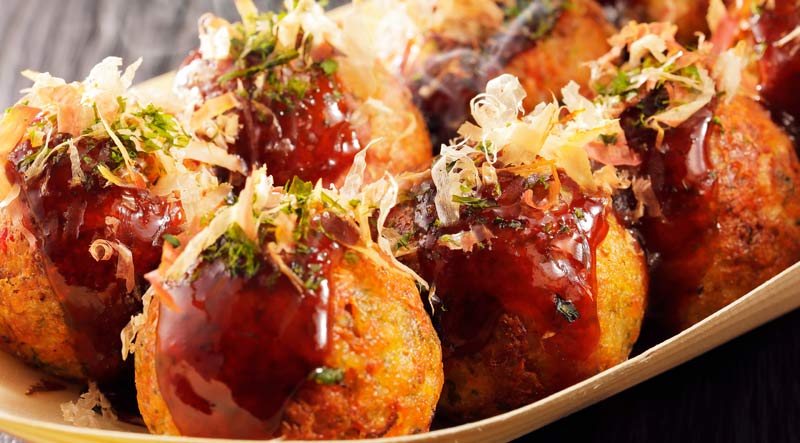
Sesame (goma)
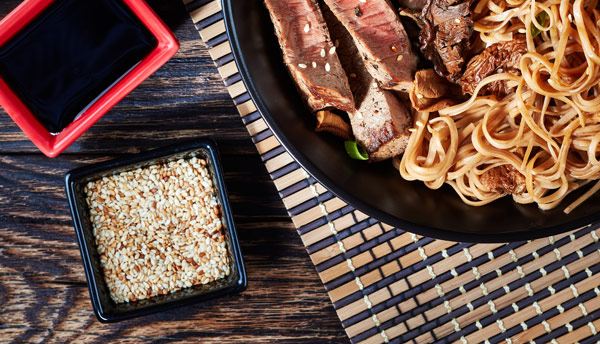 Of course sesame oil is used as a cooking oil or as the base for salad dressing but sesame seeds, either ground into a paste or as toasted seeds makes a lovely garnish for rice or even desserts.
Of course sesame oil is used as a cooking oil or as the base for salad dressing but sesame seeds, either ground into a paste or as toasted seeds makes a lovely garnish for rice or even desserts.
You can make sesame paste using a traditional suribachi to release the delicious aroma and oils from the seeds.
Negi
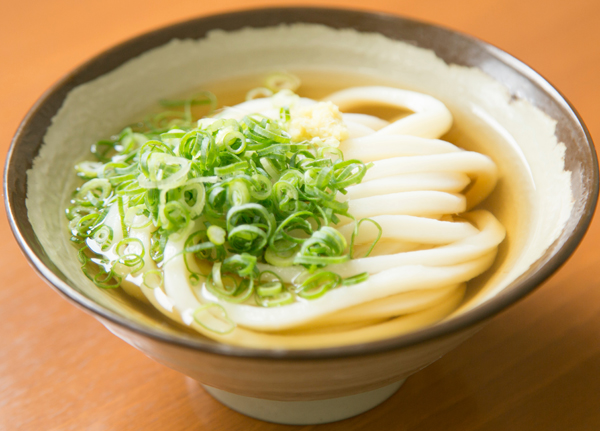
Negi, or Japanese leeks, are similar to spring onions or small leeks. As a garnish they are often sliced very finely and sprinkled over anything from soup, salads, takoyaki and ramen noodles.
As you can see, there is quite a range of dips and condiments, some familiar and some really unique to Japanese cuisine. And there are way more than the ones I have listed here!
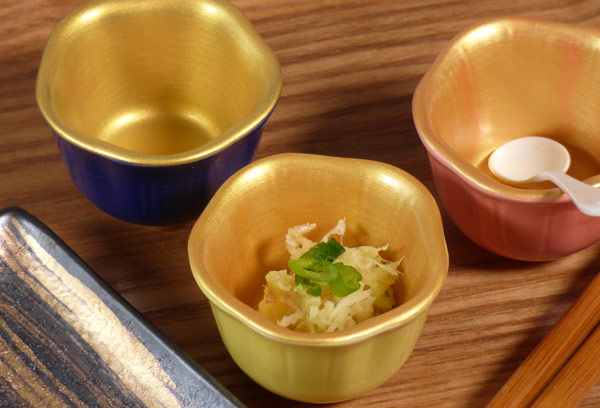
More often than not, your Japanese meal comes with multiple condiments and side dishes so if you’re cooking or serving at home, it's useful to have a lot of small plates and bowls for dishing up. Trays, fabric placemats and pretty chopsticks also add to the atmosphere and make for an authentic Japanese table setting, giving diners a touch of Japanese culture to go with their meal.
Shop for small plates and bowls
Hatsukoi has a range of pretty ceramic mini-dishes and mini-plates, just right for serving dips and condiments:


